Step by step instructions for how to dehydrate jalapenos with and without a dehydrator. Preserve your bountiful harvest and have dried jalapeno peppers that are shelf stable for use in all of your favorite recipes. They can be kept whole or ground up into a powder.
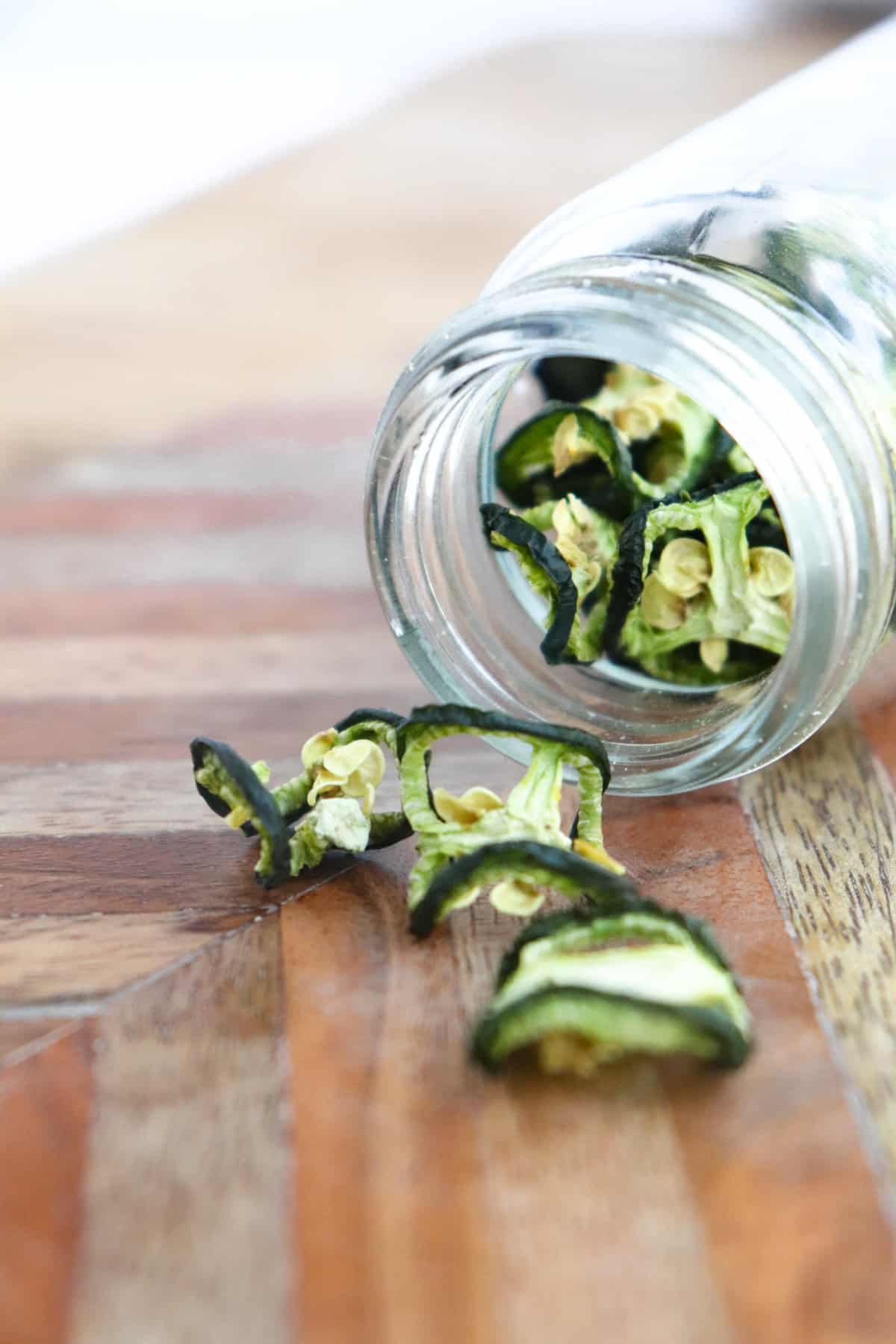
With the peak of harvest season, you may find yourself with more jalapeno peppers than you know what to do with. Or perhaps you are at the store and see the price on bulk jalapenos is too good to pass up (been there). Jalapeno peppers are a powerhouse of health and flavor.
Freezing jalapenos is one great option, as is Fermenting Jalapenos, but dehydrating jalapeno peppers is a simple way to store them for later in a very convenient, space saving way. Peppers shrink up so much when dehydrated, that they will take up very little space in your spice cabinet.
Have more fresh herbs than you know what to do with? Check out How to Freeze Fresh Herbs.
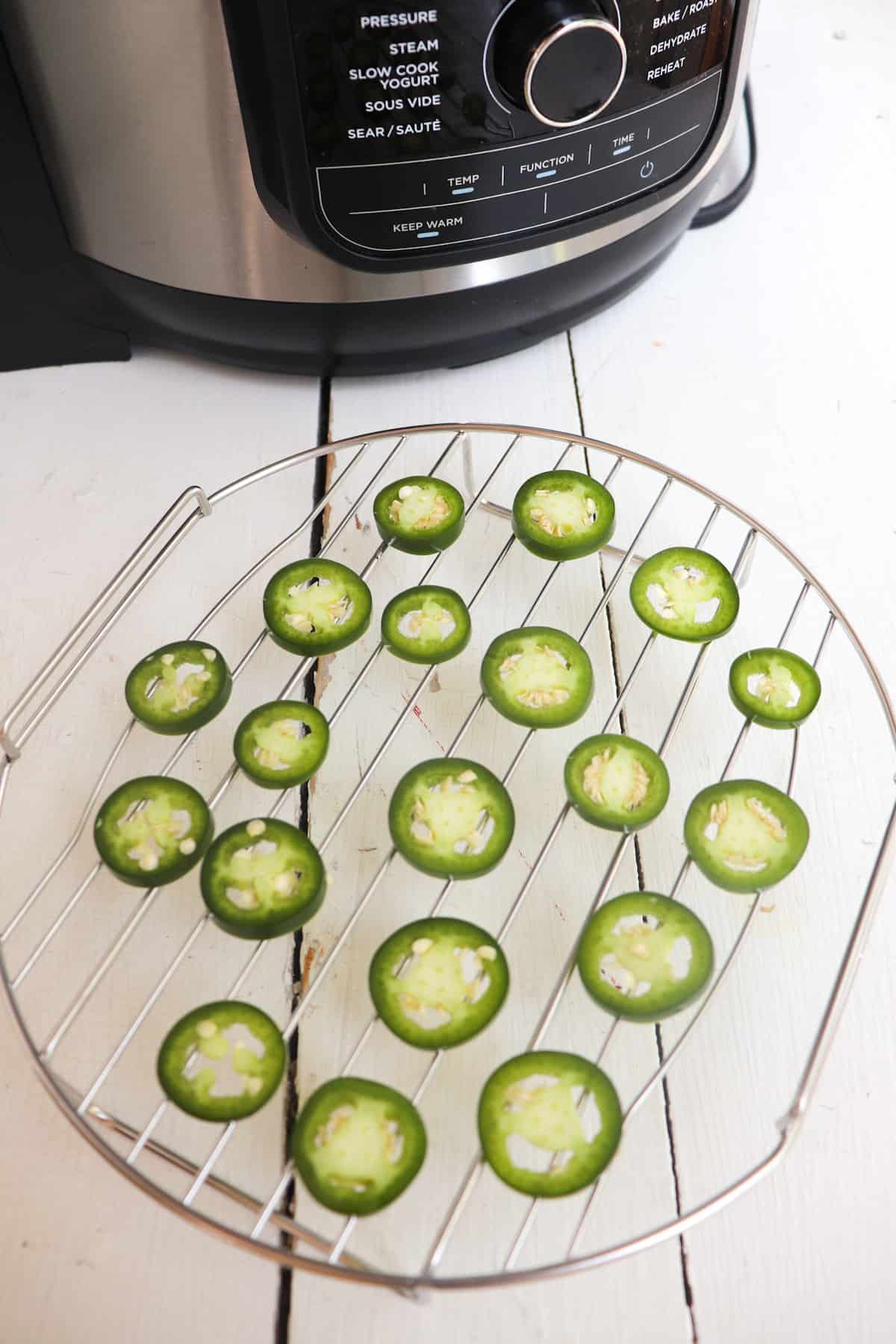
I find drying jalapeno peppers is easiest and quickest done in a dehydrator, but it this process can also be done simply by air drying.
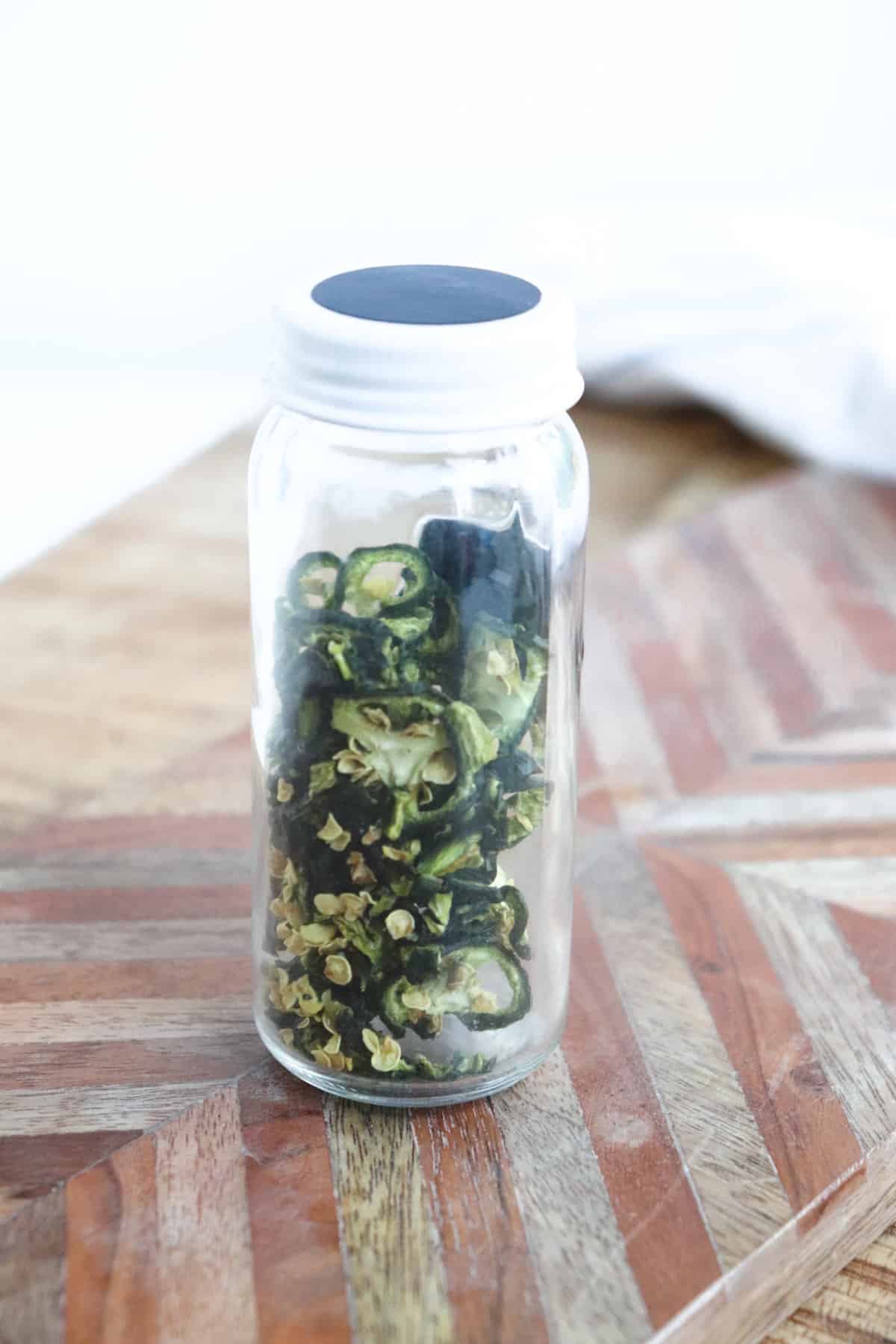
Key tips
- Wear gloves! I know that this goes without saying, but the capsicum on jalapenos makes them quite spicy. And while it's no big deal to dice up one or two jalapenos without gloves, working in bulk can really burn your hands (or eyes if you don't wash your hands very thoroughly). The first time I prepped jalapenos in bulk, I didn't wear gloves. Later throughout the day my cuticles were on FIRE! Just do yourself a favor and wear gloves.
- Ventilate. Even with my food dehydrator lid closed, air from the device escapes and the peppers make that air quite spicy. My kitchen is pretty open and I wasn't making a massive batch, but every time I walked in the room I was hit with the scent and it made my eyes sting a little. If possible open a few windows or have a fan going to help ventilate the area.
Ingredients
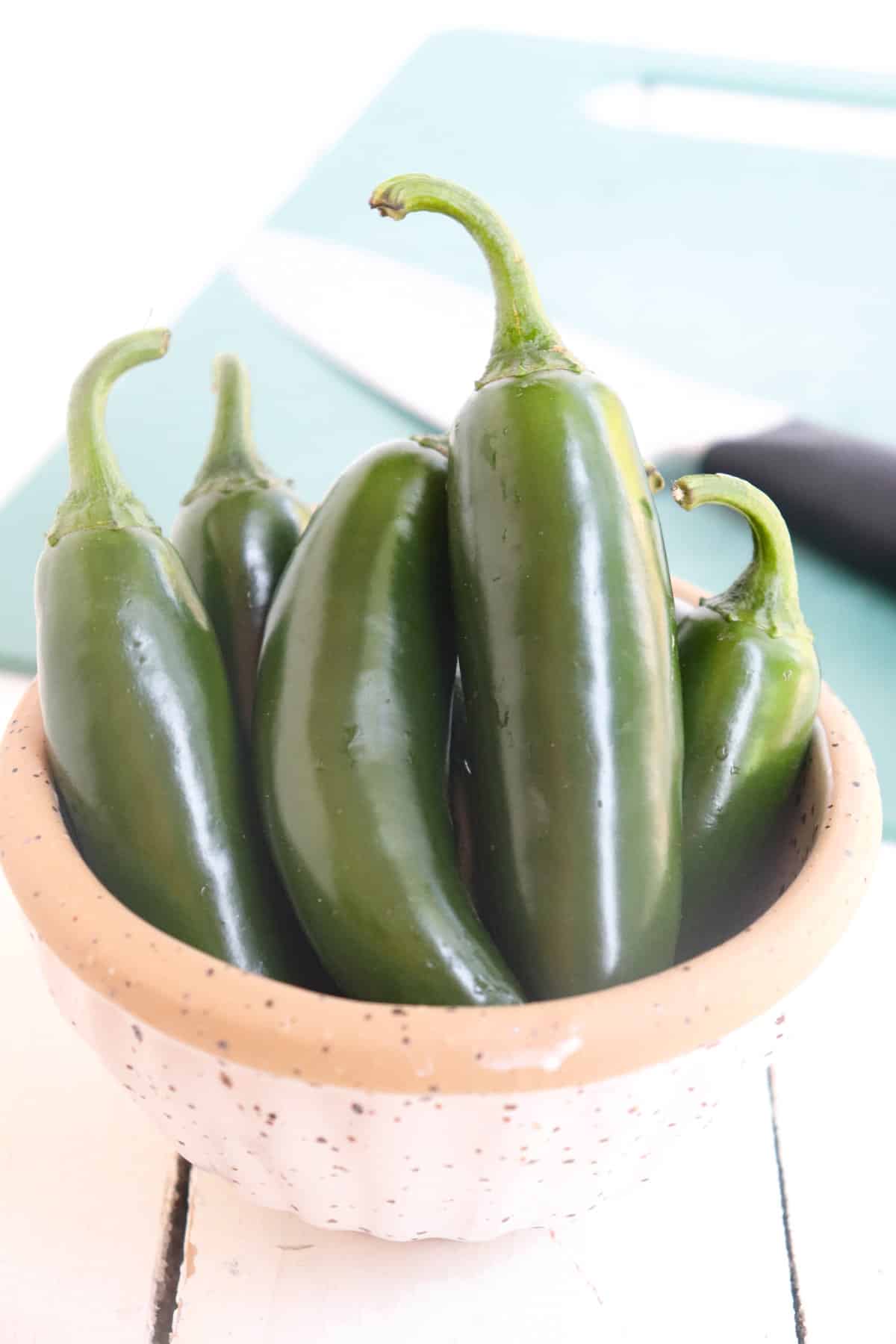
Fresh jalapenos.
That is all you will need. Store bought or homegrown will work. Just make sure to wash them and dry them before getting started.
How to dry jalapenos
Wash thoroughly and pat peppers dry. Any excess moisture will make the dehydrating process take longer.
Trim peppers and cut off any bad spots or longer stems.
Decide how you want to slice your peppers. I like to do a variety of shapes and sizes for different purposes. Here are some options
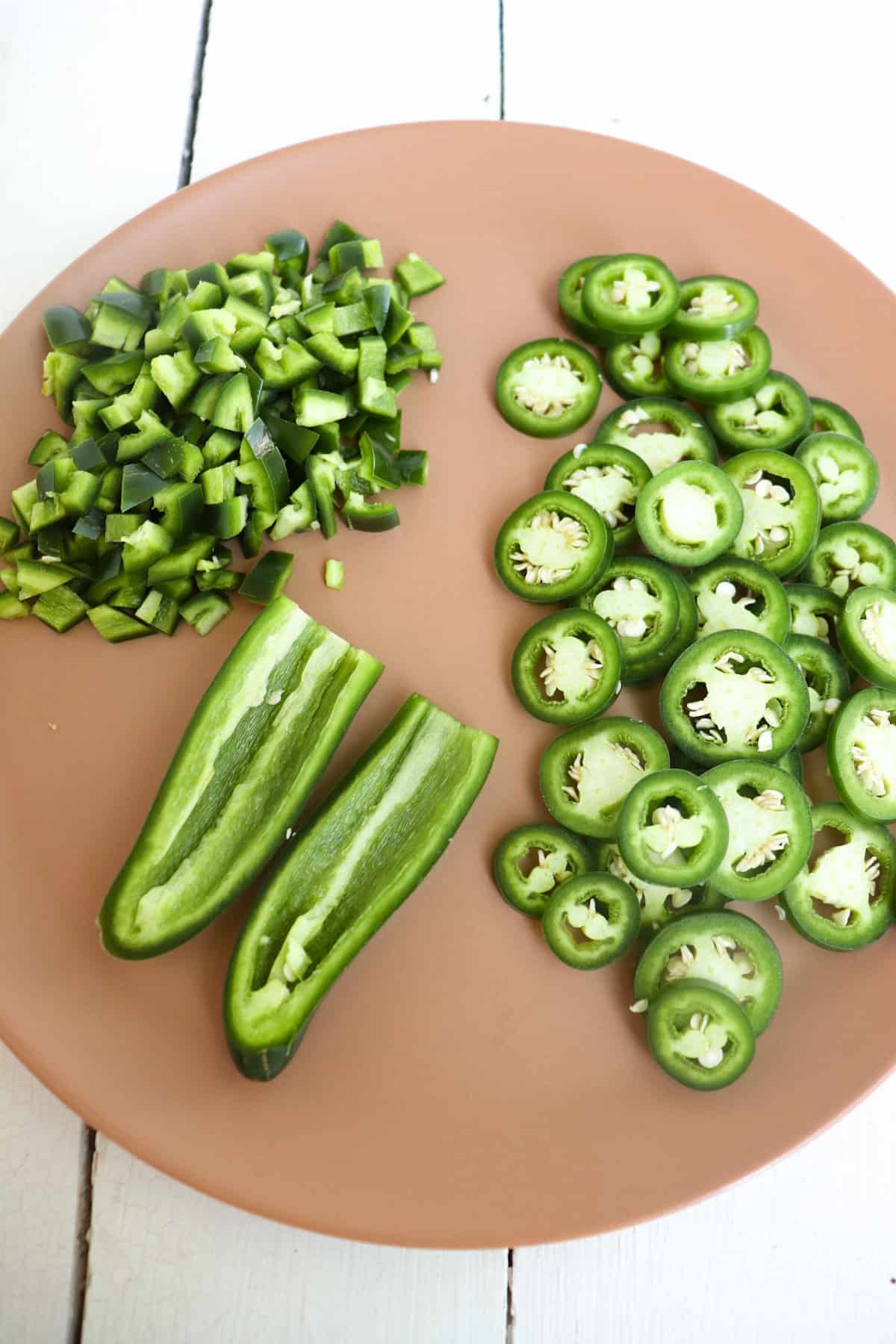
- Whole- leave as is
- Halved- slice in half lengthwise
- Rings- slice into ¼ inch rings. The seeds can stay in or you can remove them. I find the process of removing them from rings to be time consuming and tedious but it will help remove some of the heat if you want that.
- Sliced- Slice peppers into thin strips, approximately ¼ inch thick.
- Diced- After halving and slicing into strips, diced into small pieces.
Using gloves, carefully chop your peppers to the desired size. Work in batches if doing different sizes and try to keep similarly sized peppers per batch so that they dry in a consistent way.
Carefully place fresh peppers on your dehydrating rack. Every device will look different, my Ninja Foodi uses a rack, while some dehydrators use mats.
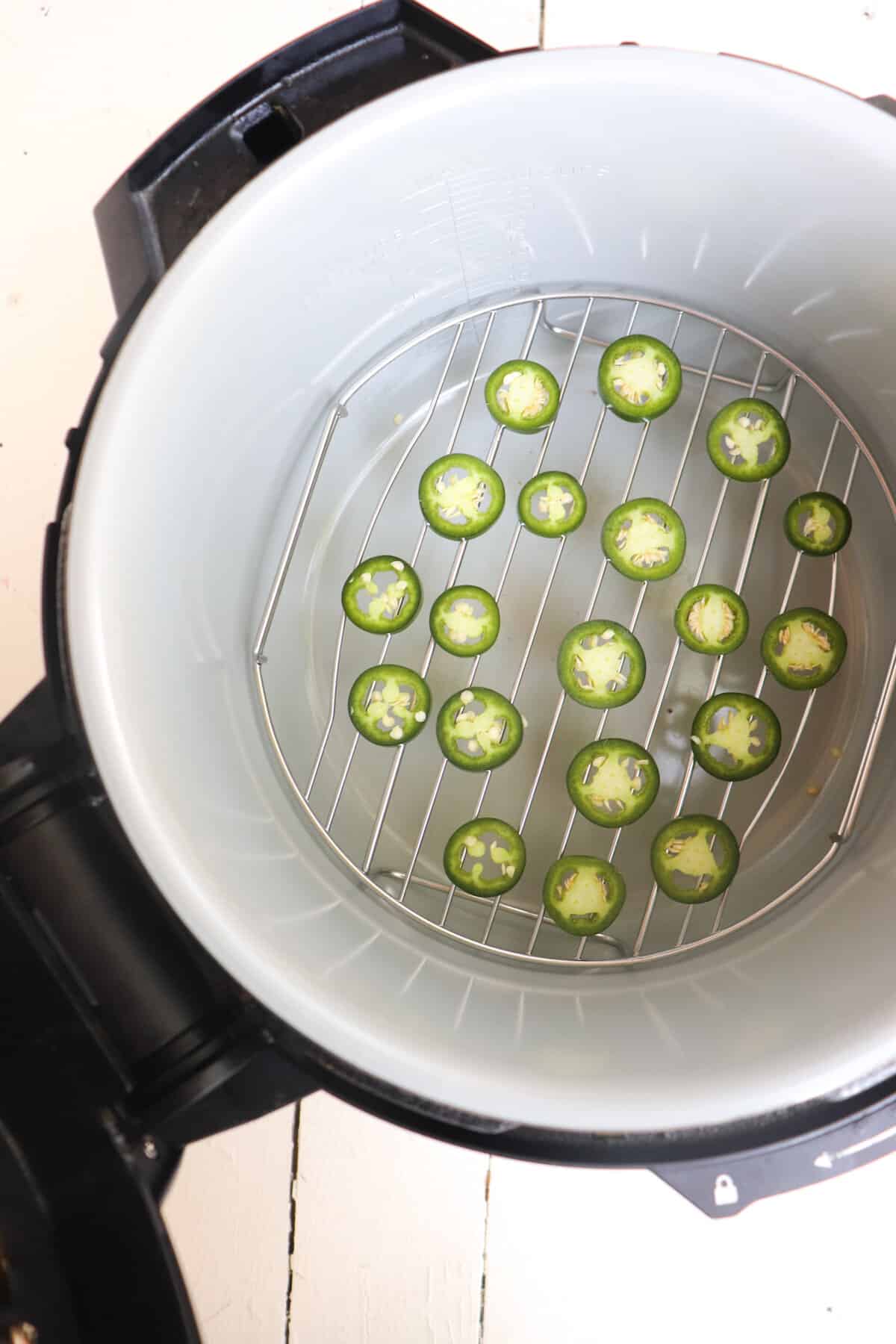
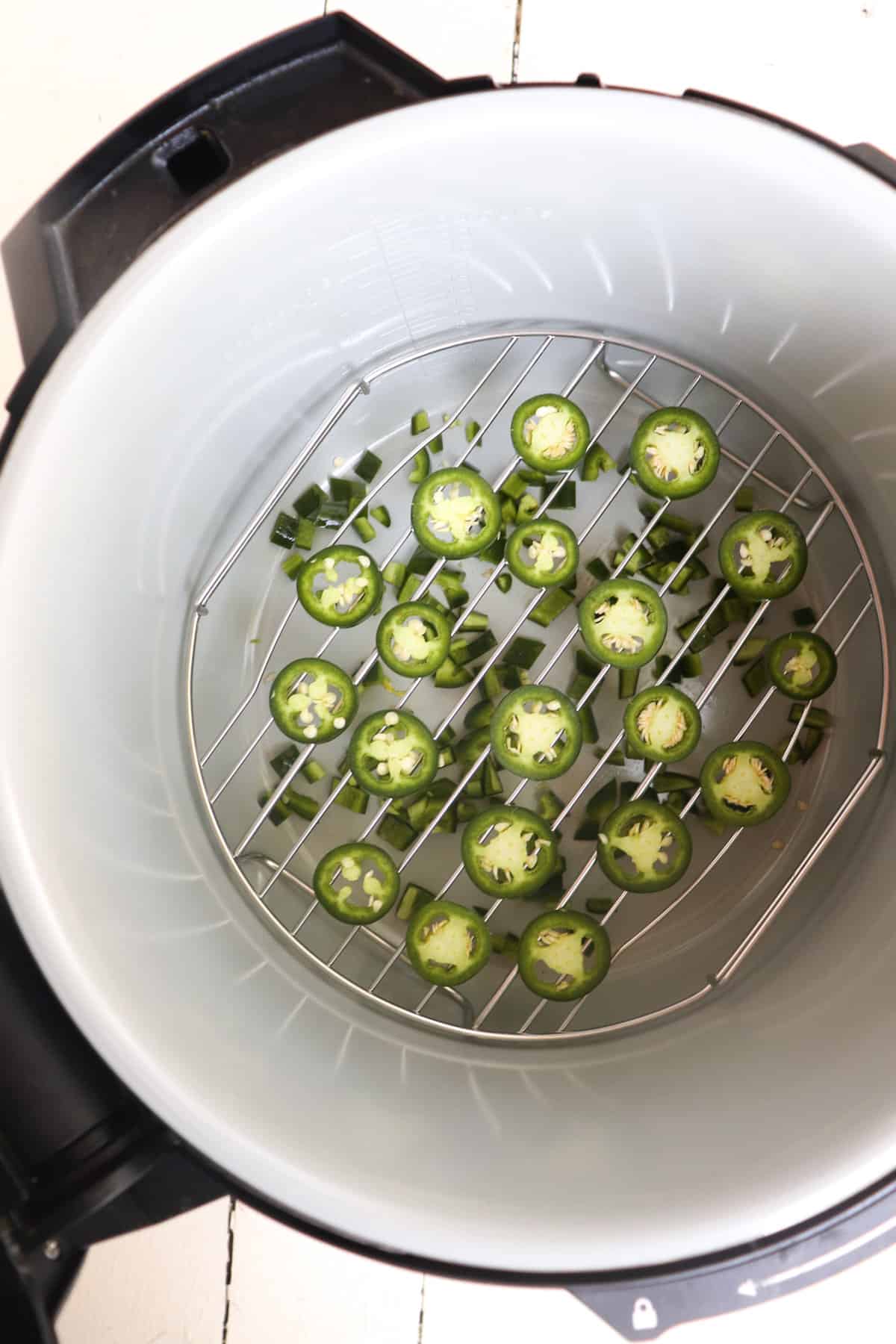
Set the device to "dehydrate" if it performs multiple functions and set the temperature to 130 degrees Fahrenheit. The time frame can truly take anywhere from 2 hours (for very small pieces) to 12 hours (for whole peppers). Keep this in mind when starting your project! You will know the peppers are dehydrated when they are brittle to the touch.
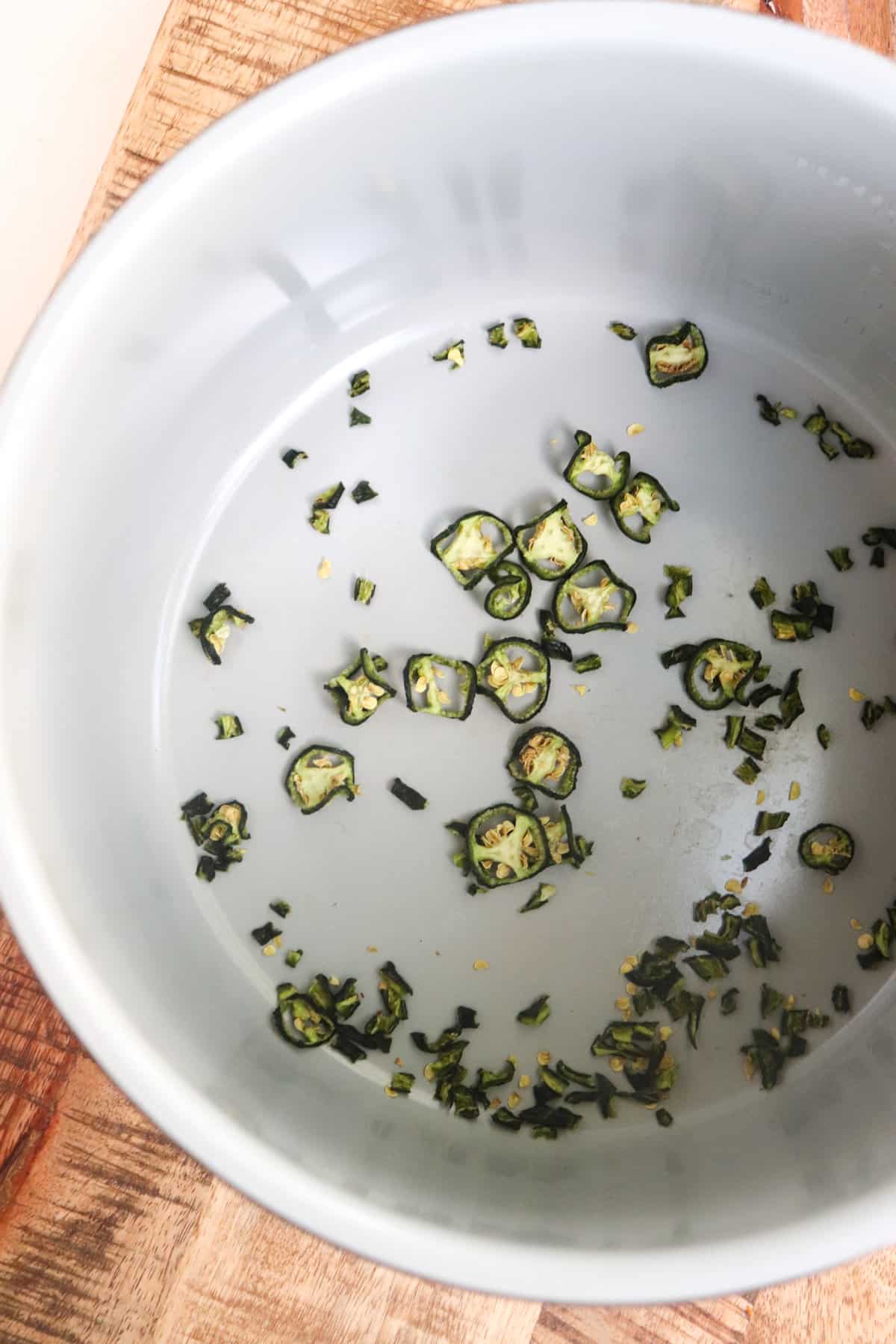
Can you air dry jalapenos?
Yes, you can. The process will obviously take much longer, weeks instead of hours, since it is done at room temperature. Prepare peppers to desired size, or leave whole. Place in direct sunlight, in a dry area. Allow the sun to dry out your peppers naturally! Place the peppers near a fan can help move the process along.
How to rehydrate dried peppers
Rehydrate your dehydrated peppers by covering them with hot water and allowing them to sit for 5-10 minutes. The peppers will puff back up and more closely resemble their original size. They are then ready to be used in soups, sauces, breads, whatever you'd like!
If you are using them in a liquid heavy recipe, like a soup or sauce, you don't need to rehydrate them first. If are you using them in a drier recipe like adding to a loaf of bread or rolls, I recommend it!
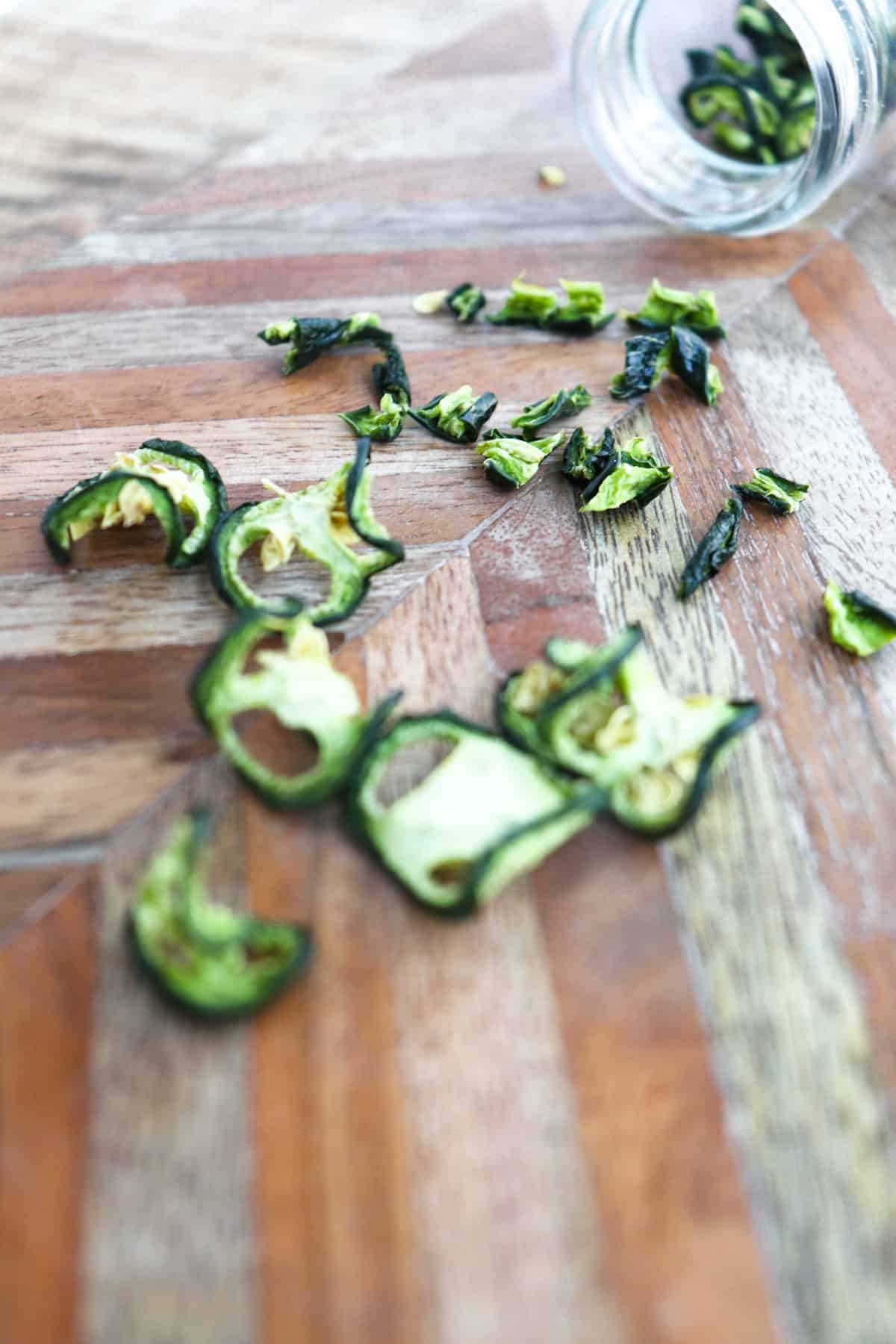
What to use dehydrated jalapenos in
Dehydrated peppers that have been rehydrated will have the flavor and spiciness of a jalapeno, but not the strong crunch. Keep that in mind when choosing what to use them in. If you want a crunchier pepper that more closely resembles fresh, I recommend preserving jalapenos by freezing them!
Some of my favorite ways to use dehydrated jalapenos are:
- jalapeno popper chicken breasts
- cheesy cauliflower rice
- slow cooker gumbo with chicken
- parsley and cilantro chimichurri
- ground venison chili
- Instant Pot Chicken and Poblano Soup
You can also grind up the dehydrated peppers into a fine powder using a spice grinder. This is an awesome way to spice up dishes and it can also be added to homemade spice blends.
Storage
Store dried jalapenos in a cool, dry place, such as a spice cabinet. Keep them in an airtight container like a glass jar with a lid or a well sealed bag. They will remain fresh for at least a year.
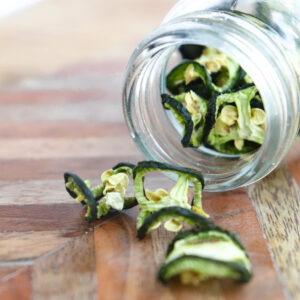
How to Dehydrate Jalapenos
Ingredients
- 6-8 fresh jalapenos
Instructions
- Wash thoroughly and pat peppers dry. Any excess moisture will make the dehydrating process take longer.
- Trim peppers and cut off any bad spots or longer stems.
- Using gloves, carefully chop your peppers to the desired size. Work in batches if doing different sizes and try to keep similarly sized peppers per batch so that they dry in a consistent way.
- Carefully place fresh peppers on your dehydrating rack. Every device will look different, my Ninja Foodi uses a rack, while some dehydrators use mats.
- Set the device to "dehydrate" if it performs multiple functions and set the temperature to 130 degrees Fahrenheit. The time frame can truly take anywhere from 2 hours (for very small pieces) to 12 hours (for whole peppers). Keep this in mind when starting your project! You will know the peppers are dehydrated when they are brittle to the touch.













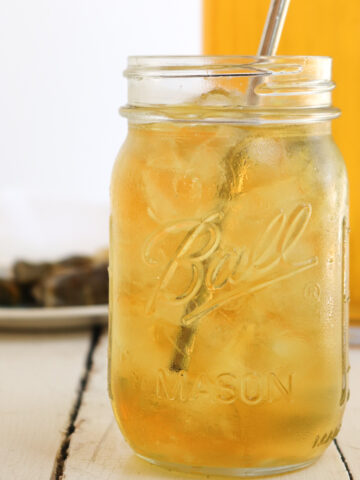
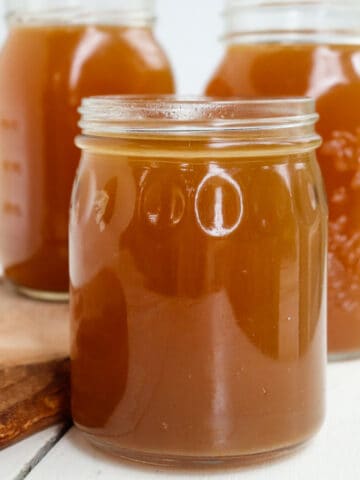
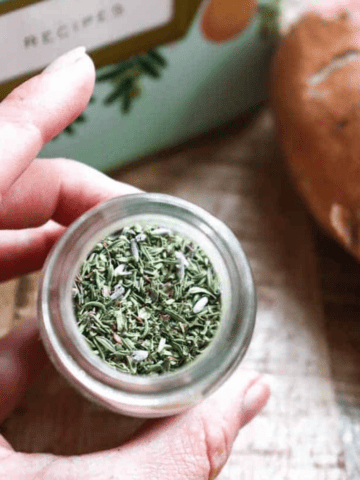

Leave a Reply